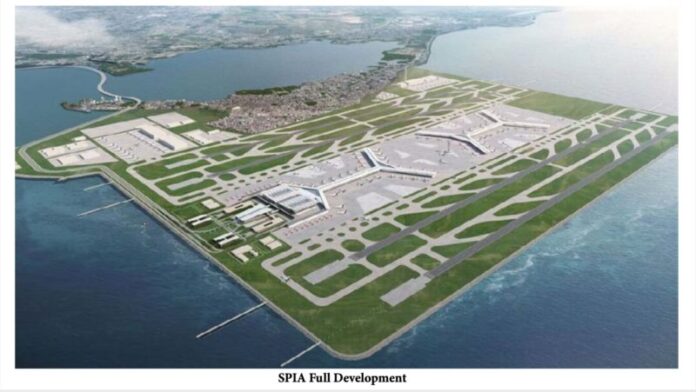-
A joint venture and development agreement for the US$11 billion Sangley Point International Airport Project in Cavite has been signed by the SPIA Development Consortium and the Cavite provincial government
-
The signing of the agreement on February 6 clears the way for the consortium to begin preparatory work on the airport project
-
SPIA is envisioned as a two-runway airport with annual capacity of 80 million passengers, expandable to four runways that can handle as many as 130 million passengers a year
The SPIA Development Consortium and the Cavite provincial government signed on February 6 a joint venture and development agreement for the US$11 billion Sangley Point International Airport (SPIA) Project in Cavite, according to regulatory disclosures by some members of the consortium.
The signing clears the way for the consortium to begin preparatory work on the airport project. Cavite Governor Jonvic Remulla has been quoted in a newspaper report as saying he hopes the groundbreaking for the project would happen this year.
On September 14, 2022, the Cavite provincial government officially awarded the contract to the SPIA Development Consortium, whose members also signed their Consortium Collaboration Agreement during the same event.
SPIA consortium awarded US$11B Sangley airport project
The awarding came after no firm challenged the consortium’s unsolicited proposal until the August 17, 2022 deadline for the project’s competitive challenge process.
The consortium is led by Cavitex Holdings Inc., House of Investments Inc. and Samsung C&T Corp. Other members of the consortium are MacroAsia Corp., Munich Airport International GmbH, and Ove Arup & Partners Hongkong Ltd.
The SPIA Development Consortium submitted its unsolicited proposal for a joint venture with the Cavite provincial government to develop SPIA in 2021, after the latter declared as failed the second bidding for the project in October 2021.
SPIA is envisioned as a two-runway airport with annual capacity of 80 million passengers, expandable to four runways that can handle as many as 130 million passengers a year.
The airport project aims to provide a premium gateway that will initially serve as an alternative to Ninoy Aquino International Airport (NAIA) and is designed to meet an expected increase in demand for air transport in the next 30-40 years.
The project includes the construction of a four-kilometer connector road with provisions for rail connectivity, as well as fully-integrated logistics and aviation support facilities.
With the development of the first runway, SPIA can operate as a satellite runway to immediately relieve the extreme congestion of the runway at NAIA.
The consortium said the SPIA development is expected to create 50,000 jobs and be a catalyst project to bring in foreign direct investment that will promote trade and economic development.





